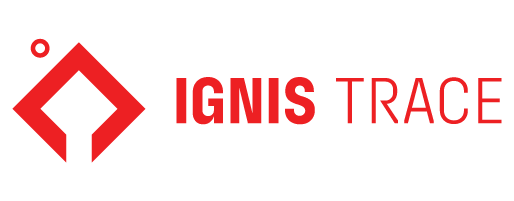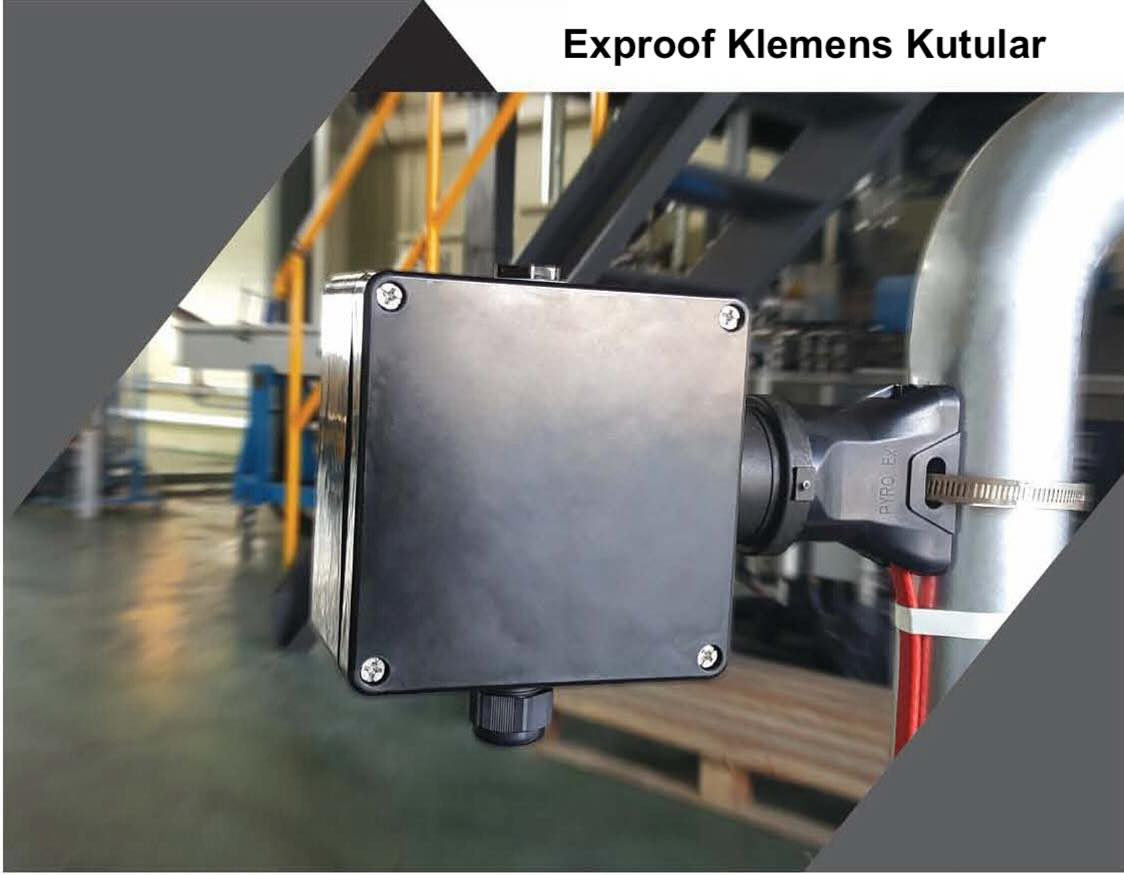Temperature regulation is the process of maintaining a controlled temperature within a defined range using specific methods and equipment. In industrial temperature regulation, this control is vital for ensuring safety, improving product quality, and optimizing energy use across complex manufacturing environments. Whether it’s a food processing plant, a chemical facility, or a pharmaceutical lab, maintaining the right temperature during production is essential for consistent results and compliance with quality standards.
The process involves monitoring real-time temperature data using sensors, processing the data with controllers, and adjusting heating or cooling systems accordingly. Automated control systems continuously respond to any deviation from the set range, stabilizing the environment. Temperature regulation solutions such as smart thermostats, PID controllers, and heating systems allow facilities to maintain this balance efficiently. This not only minimizes energy waste but also reduces machine wear, prevents production delays, and ensures higher operational reliability. For any business focused on productivity and sustainability, precise temperature control is no longer optional — it’s a fundamental requirement.
What is Temperature Regulation?
Temperature regulation refers to the process of maintaining the temperature of a system, space, or material within a specific, predefined range. This process ensures that equipment, environments, or processes remain stable and perform efficiently. In everyday applications, thermostats in homes regulate heating and cooling. However, in industrial settings, the process becomes far more complex and critical. Uncontrolled temperature fluctuations can result in product damage, safety hazards, and significant energy waste. Therefore, industries rely on automated systems to precisely monitor and adjust temperatures in real time.
The goal of temperature regulation is to prevent thermal drift and maintain consistent conditions throughout a production or operational cycle. This involves the use of various components such as sensors, controllers, and actuators that respond to changes immediately. Effective temperature regulation increases product quality, minimizes downtime, and extends the life of industrial machinery. Whether it’s cooling a reactor in a chemical plant or heating an oven in food production, this control system plays a vital role. As industries demand more precision and efficiency, advanced temperature regulation technologies are becoming indispensable. It’s a foundational element in any modern, energy-conscious facility.
Why is Temperature Regulation Important?
In industrial settings, temperature regulation is essential for ensuring consistent product quality, safety, and energy efficiency. Uncontrolled temperature changes can damage raw materials, affect chemical reactions, or compromise product integrity. It also creates unsafe working conditions and puts strain on machinery. Maintaining optimal temperature prevents costly equipment failures and reduces downtime. Moreover, temperature-sensitive industries such as food, pharmaceuticals, and electronics require strict control to meet compliance standards. Regulated temperature helps maintain operational consistency across shifts and seasons. It also minimizes energy waste by avoiding overheating or overcooling. This leads to significant cost savings over time. A stable temperature environment results in longer equipment lifespan and less maintenance. Ultimately, temperature regulation is the backbone of reliable, efficient, and scalable industrial operations.
How Does Temperature Regulation Work?
Temperature regulation works by continuously measuring the temperature of an environment or object, comparing it to a desired setpoint, and making automatic adjustments to maintain balance. This process typically involves sensors that detect temperature changes, controllers that interpret those readings, and actuators that activate heating or cooling elements. Together, these components create a feedback loop that ensures consistent control. If the measured temperature strays from the setpoint, the system immediately responds by increasing or decreasing thermal output. This prevents overheating, undercooling, and unwanted fluctuations that could disrupt industrial processes.
In industrial temperature regulation, the process is often automated through advanced control systems such as PID controllers or PLC-based systems. These technologies allow for highly responsive and precise temperature management in complex operations. Data from sensors is processed in real time to make micro-adjustments, ensuring stability even under changing external conditions. The entire system is typically integrated into broader industrial automation platforms, allowing for remote monitoring and diagnostics. This high level of control not only increases efficiency but also reduces the risk of production errors, equipment damage, and energy waste. In essence, temperature regulation works as an intelligent control mechanism that ensures thermal stability at every stage of a process.
Temperature Regulation Methods Used in Industrial Facilities
Industrial facilities use a variety of temperature regulation methods to maintain precise thermal control in complex environments. The choice of method depends on the type of process, material properties, safety requirements, and desired efficiency level. Some systems rely on manual settings for basic control, while others use fully automated solutions integrated with digital monitoring tools. The main objective is to keep the process within a safe and consistent temperature range to avoid production errors, reduce energy consumption, and ensure equipment longevity. This is particularly important in high-precision fields such as chemical manufacturing, pharmaceuticals, and electronics.
Common industrial temperature regulation techniques include PID control systems, programmable thermostats, smart sensors, heating cables, and thermal insulation. Each method serves a specific role — PID controllers offer fine-tuned adjustments, while insulation systems minimize energy loss. In many facilities, multiple methods are used together to create a layered temperature control system. For instance, a heating element may be controlled by a thermostat, monitored by sensors, and supported by insulation to maximize efficiency. Additionally, cloud-connected platforms allow operators to monitor and adjust systems remotely, increasing flexibility and responsiveness. As industrial demands evolve, so too do the temperature regulation methods, which are becoming more data-driven, intelligent, and efficient.
Manual and Automatic Temperature Regulation Solutions
Temperature regulation solutions can be categorized into two main types: manual and automatic. Manual systems require human input to adjust settings, typically using mechanical thermostats or analog controls. These systems are simple and low-cost but lack the responsiveness and precision needed for complex industrial processes. Automatic systems, on the other hand, use sensors and programmable controllers to maintain temperature without constant human oversight. They offer real-time adjustments, which improves process accuracy and reduces waste. Automatic solutions are ideal for environments where temperature stability is critical, such as cleanrooms or chemical processing plants. These systems can also be integrated into a facility’s overall automation network. Remote access and monitoring capabilities further enhance operational efficiency. While manual systems may still be suitable for basic or small-scale operations, most industries today rely on automated solutions for optimal results. Choosing between manual and automatic depends on budget, process complexity, and safety requirements.
Temperature Regulation with PID Controllers
In industrial settings, temperature regulation often depends on the precision and responsiveness offered by PID controllers. PID stands for Proportional, Integral, and Derivative — three functions that work together to calculate and correct temperature deviations. These controllers constantly compare the actual temperature to a target value and make fine adjustments to reduce error. Proportional control addresses current deviations, integral accounts for past errors, and derivative anticipates future trends. Together, this creates a dynamic control loop that stabilizes the process quickly and accurately. PID controllers are especially useful in systems where temperature changes must be managed in real time. They reduce overshooting, minimize fluctuations, and improve energy efficiency. These systems can be programmed to handle complex thermal processes in sectors like plastics, food processing, and electronics. As part of broader temperature regulation solutions, PID controllers are valued for their reliability and versatility. Their ability to maintain consistency in fluctuating environments makes them a staple in modern industrial automation.
Temperature Regulation with Smart Sensors and Thermostats
Modern temperature regulation methods rely heavily on smart sensors and programmable thermostats to maintain precision and improve efficiency. These devices provide real-time data, enabling automatic systems to respond instantly to any temperature fluctuation. Smart sensors are capable of detecting even minute changes and sending that information to a central control unit. Thermostats interpret these signals and adjust heating or cooling equipment accordingly. Many smart thermostats also support scheduling, learning algorithms, and remote access via mobile or web apps. In industrial facilities, this means that system managers can monitor and adjust settings without being physically present. Additionally, these components often integrate with larger building or process automation systems. Their ability to self-calibrate and adapt to changing conditions reduces the need for manual intervention. By minimizing response time and maximizing accuracy, smart devices contribute to safer and more energy-efficient operations. As such, they have become a key part of modern temperature regulation methods in industrial applications.
Components and Equipment Required for Temperature Regulation
A fully functional temperature regulation system relies on the integration of several key components, each playing a vital role in maintaining thermal stability. The most common elements include temperature sensors, controllers (like thermostats or PID devices), heating or cooling elements, and insulation materials. Sensors detect temperature levels, while controllers interpret this data and activate the appropriate equipment to adjust the environment. Heating cables or thermal pads provide the necessary heat, while fans, cooling coils, or chillers help reduce temperature when needed. Insulation is critical in retaining desired temperatures and preventing energy loss. Each component must be carefully selected and installed to match the operational requirements of the facility.
In industrial temperature regulation, these components often need to work under extreme conditions, such as high pressure, corrosive environments, or constant vibration. As such, equipment used in these systems must be durable, accurate, and compatible with automation networks. Advanced systems may also include touchscreen control panels, data logging modules, and remote monitoring capabilities. Proper calibration and periodic maintenance are essential to ensure accurate performance. Choosing the right components not only impacts the system's effectiveness but also affects energy consumption and operational safety. Well-integrated systems improve process control, reduce waste, and extend the service life of production equipment.
The Role of Temperature Detectors and Sensors
In any temperature regulation system, detectors and sensors serve as the foundation for accurate control. These components monitor the thermal environment in real time, allowing systems to respond quickly to even minor fluctuations. Sensors like thermocouples, RTDs (Resistance Temperature Detectors), and infrared sensors each serve different purposes depending on the application. For example, thermocouples are ideal for high-temperature environments, while RTDs offer superior precision at lower ranges. Without reliable sensors, controllers cannot make informed decisions, leading to inefficiencies or even hazardous situations. Industrial facilities often use multiple sensors across different zones for more granular control. Data from these detectors is continuously fed into control systems, ensuring consistent output. The sensors must also be properly calibrated to avoid measurement drift over time. Additionally, rugged and chemically resistant sensor housings are often required in harsh industrial conditions. In short, these devices are the eyes of the temperature regulation system, and their reliability directly impacts overall performance.
Electronic Thermostats and Control Panels
In modern temperature regulation solutions, electronic thermostats and control panels play a central role in managing thermal environments. Thermostats monitor the ambient temperature and activate heating or cooling devices based on pre-set thresholds. Unlike mechanical models, electronic thermostats offer higher precision and user-friendly interfaces. They allow for customizable temperature ranges, automated schedules, and integration with other control systems. Control panels, on the other hand, act as centralized hubs that coordinate input from multiple sensors and output devices. These panels often include touchscreens or digital displays for easy interaction. In industrial facilities, control panels may be linked to SCADA or PLC systems for comprehensive automation. Their real-time monitoring capabilities help detect anomalies and trigger alerts before major issues arise. They also store data for later analysis, enabling better decision-making and process optimization. Both thermostats and panels are essential for scalable, responsive, and energy-efficient temperature control. Without them, high-accuracy temperature regulation solutions would not be possible in demanding industrial environments
Heating Cables and Insulation Systems
Temperature regulation methods are only effective when supported by proper heating and insulation systems. Heating cables are flexible electrical elements used to maintain or raise temperatures in pipes, tanks, or surfaces. They are especially useful in preventing freezing or maintaining process temperatures in outdoor or unheated areas. Self-regulating heating cables adjust their output based on ambient conditions, increasing efficiency and safety. Meanwhile, insulation systems help retain the heat produced, minimizing energy loss and reducing the workload on heating equipment. Materials like fiberglass, mineral wool, or foam insulation are commonly used depending on the environment. Together, heating cables and insulation form a dual-layer strategy for temperature control. They ensure that heat is both delivered and preserved, creating a stable thermal environment. In industrial facilities, using both systems together enhances operational consistency. As part of comprehensive temperature regulation methods, these components are vital for reducing energy costs and avoiding production disruptions due to temperature instability.
Considerations in Temperature Regulation Applications
When implementing temperature regulation in industrial applications, several factors must be carefully considered to ensure efficiency, safety, and long-term reliability. First and foremost, the system should be designed based on the specific thermal requirements of the process or product. A one-size-fits-all approach rarely works in complex industrial settings. Sensor placement, response time, temperature range, and control precision are just a few elements that influence the success of the system. Environmental conditions such as humidity, dust, or chemical exposure also affect equipment selection. If these factors are not addressed early, it can lead to inaccurate readings, control failures, or even safety hazards.
Maintenance and calibration are equally important for consistent system performance. Sensors and controllers must be regularly checked to prevent drift and degradation. Electrical components should be tested for proper insulation and load capacity. Software and firmware updates for control systems also ensure optimal function and cybersecurity. Training operators to use the system correctly is another critical step, as human error can disrupt even the most advanced automated solution. Additionally, redundancy in critical systems is recommended for high-risk applications. Overall, attention to detail during planning, installation, and operation greatly enhances the effectiveness of temperature regulation strategies in industrial facilities.
How to Increase Energy Efficiency with Temperature Regulation?
One of the most significant advantages of modern temperature regulation solutions is their ability to enhance energy efficiency in industrial environments. By maintaining precise temperature levels, systems avoid unnecessary heating or cooling cycles. This prevents energy waste and extends the life of equipment by reducing operational stress. Smart sensors and controllers automatically adjust output based on real-time conditions, ensuring that only the necessary amount of energy is used. When integrated with insulation systems and heating cables, these technologies work together to stabilize temperatures with minimal energy input. This leads to lower utility costs and reduced environmental impact.
Automation plays a critical role in optimizing energy use. Advanced software can analyze historical temperature data to identify patterns and inefficiencies. With this insight, facilities can fine-tune setpoints, adjust operating schedules, and detect areas of energy loss. Regular system maintenance, including calibration of sensors and inspection of thermal components, also contributes to overall efficiency. Additionally, using energy-efficient components such as variable-speed drives or high-efficiency heating elements further minimizes consumption. In the long run, effective temperature regulation solutions not only reduce energy bills but also help industries meet sustainability goals and regulatory requirements. This makes temperature control a strategic investment, not just a technical necessity.
Temperature Regulation Applications in Different Sectors
Industrial temperature regulation plays a vital role across numerous sectors, each with its own unique requirements and challenges. In the food and beverage industry, for example, precise temperature control is essential for safety, product consistency, and shelf life. In pharmaceuticals, maintaining tight thermal conditions is necessary during both production and storage to preserve chemical integrity. In the chemical sector, exothermic reactions must be closely monitored and regulated to avoid dangerous conditions. In plastic molding and extrusion, temperature directly affects material flow and product quality, making accurate regulation critical for precision manufacturing.
Energy, HVAC, and electronics sectors also rely heavily on temperature regulation. Data centers use sophisticated cooling systems to keep servers operating within safe limits. In renewable energy applications, such as battery storage and solar panel management, thermal balance impacts efficiency and lifespan. Even industries like textile and automotive use temperature control in processes like dyeing, coating, or engine component manufacturing. Each sector requires custom industrial temperature regulation systems that account for process complexity, safety standards, and environmental conditions. As industries modernize, the demand for smarter, more adaptive temperature control solutions continues to grow, driving innovation in both equipment and methodology.
Increase Production Efficiency with Proper Temperature Regulation
Maintaining precise and stable temperature conditions is one of the most effective ways to enhance production efficiency in industrial environments. Unregulated temperatures can lead to inconsistent product quality, slower process times, and unplanned downtime. Temperature regulation methods help standardize operations, ensuring that each production cycle is predictable and repeatable. This reduces the need for rework, minimizes scrap, and increases throughput. With fewer process interruptions and tighter quality control, facilities can meet deadlines more reliably and reduce operating costs over time.
Proper thermal management also leads to better use of energy and resources. For example, regulated heating systems can pre-warm machinery to optimal temperatures, reducing startup time. Automated controls reduce human error and allow for real-time adjustments that prevent performance drift. Over time, this consistency results in longer equipment life and fewer maintenance needs. By investing in advanced temperature regulation methods, companies gain greater control over production variables — a key advantage in competitive markets. As a result, efficiency improves not just in terms of output, but also in quality, safety, and energy performance.

 Türkçe
Türkçe



